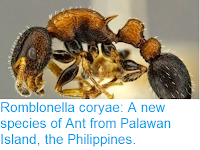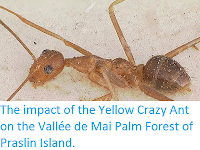The genus Platythyrea currently contains 38 species of large stinging Ants from tropical regions of the Americas, Australia, Africa and East Asia, which nest in cavities in live or dead trees (or in the case of some African species, Termite mounds). In all species in this genus in which reproduction has been studied, the workers are able to reproduce parthogenically (i.e. workers can lay eggs which produce clones of themselves), with some species also producing sexual queens and males.
In a paper published in the journal ZooKeys on 16 January 2018, Natthaporn Phengsi of the Department of Biology at Burapha University, Weeyawat Jaitrong of the Natural History Museum in Khlong Luang, Jiraporn Ruangsittichai of the Department of Medical Entomology at Mahidol University, and Salinee Khachonpisitsak, also of the Department of Biology at Burapha University, describe a new species of Platythyrea from southern Thailand and western Malaysia.
The new species is named Platythyrea janyai, in honour of Janya Jareanrattawong of the Royal Forest Department of Thailand, for his help with collecting the specimens from which the species is described. The specie is described from four workers collected from dead wood on the forest floor in lowland rainforest in the Khao Pu Khao Ya National Park in Phatthalung Province in southern Thailand; the species was also observed in the Khao Chong Botanical Garden in Trang Province, also southern Thailand, and in the Ulu Gombak Forest Reserve in Selangor State, Malaysia. The described specimens are between 6.63 and 6.96 mm in length, and are dark brown in colour, with reddish and yellowish markings.
Platythyrea janyai, worker. (A) Body in profile view. (B) Head in full-face view. (C) Body in dorsal view. Phengsi et al. (2018).
See also...
Follow Sciency Thoughts on Facebook.







